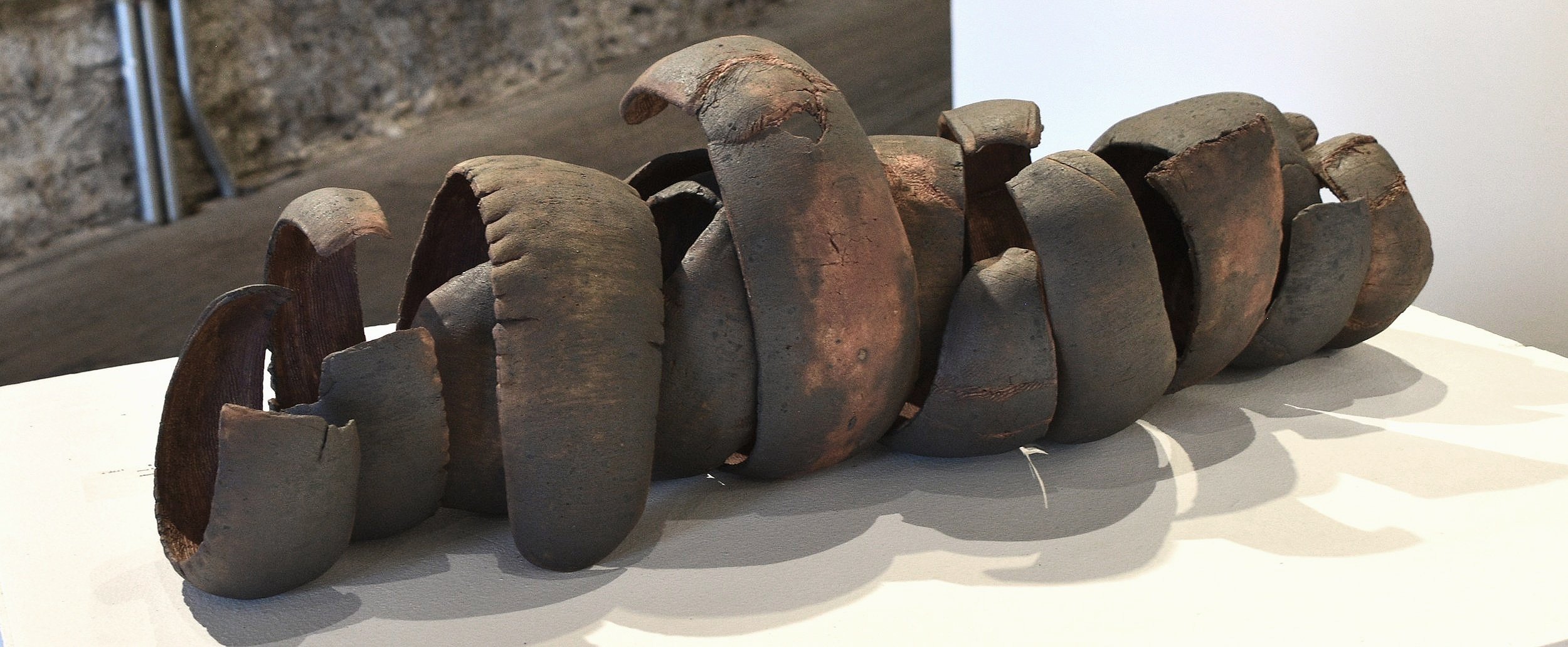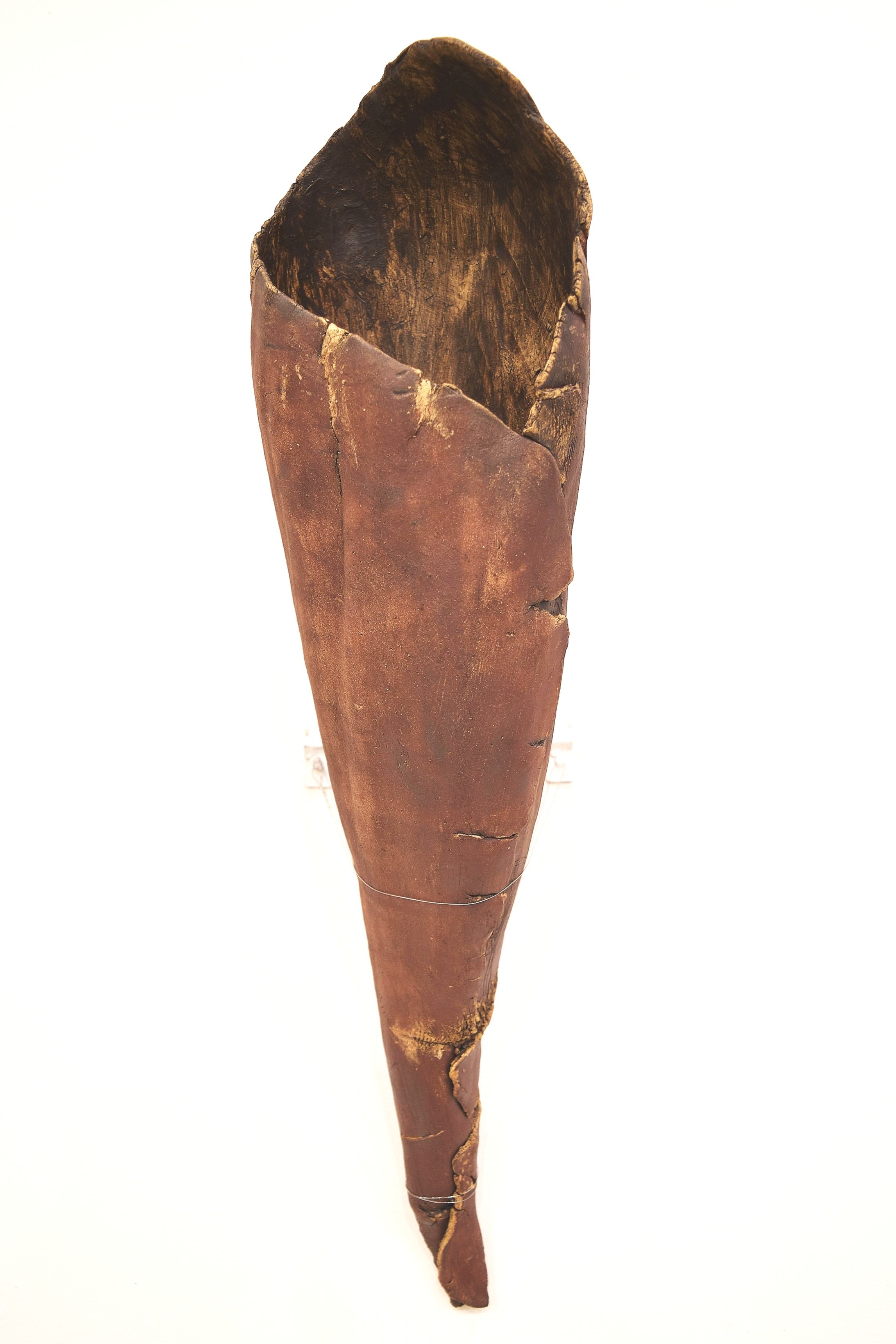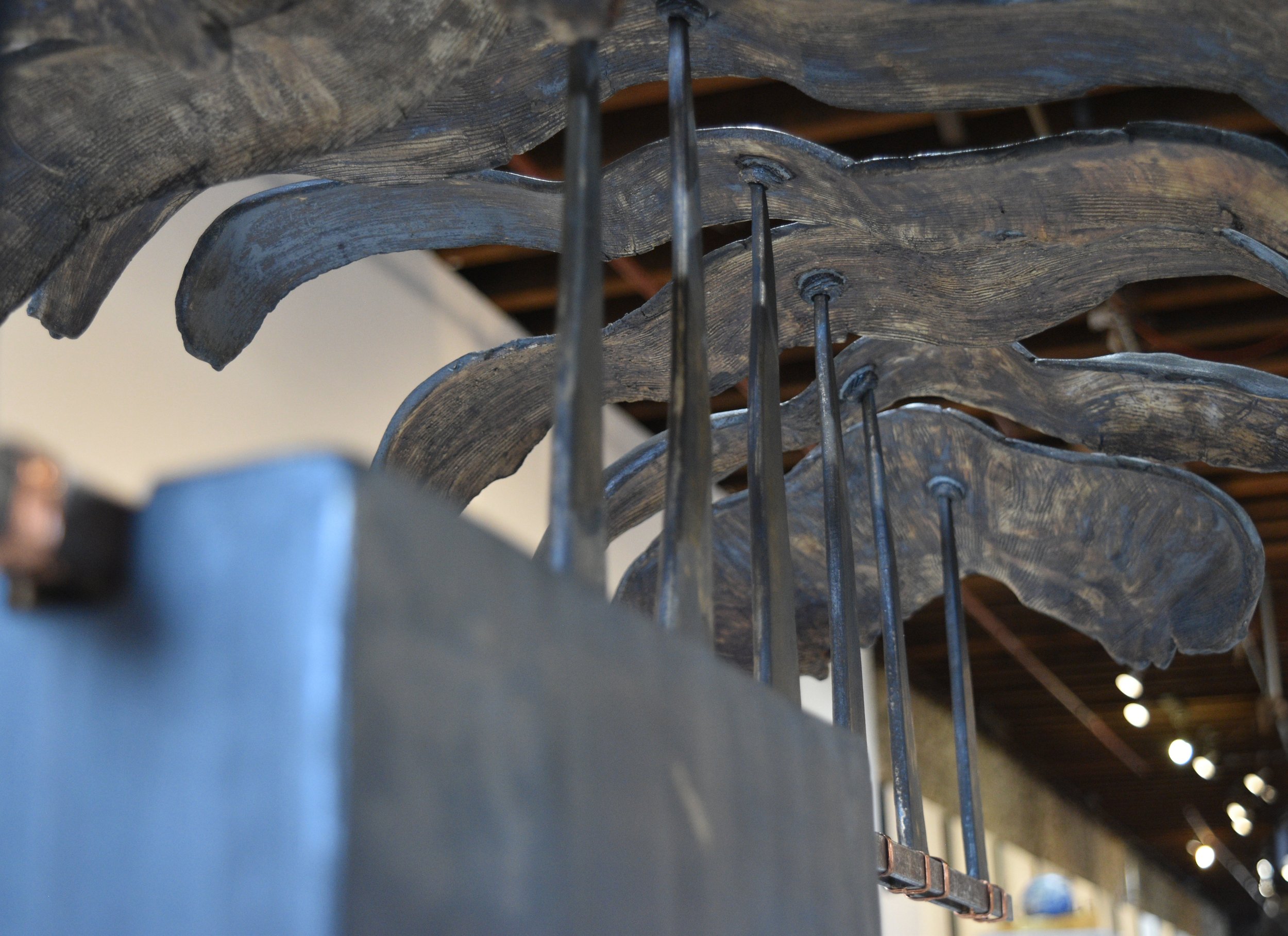
Sculpture
My ceramic work begins as simple stoneware slabs that are manipulated by hand. I leave the awkward joins, cracks, and scarring intentionally untouched—artifacts of the construction process and of the compromises made between artist and material.
The introduction of transitional metal oxides into the clay while still plastic, and again prior to final firing, imbues the finished work with surfaces reminiscent of stone and of earth.
Through paper sculpture, I combine my interests in form and surface using printing techniques developed with metal and salt.
A lifelong scavenger, found materials play an important role in my work—both as additional raw material and as inspiration.
Descriptions at right; image gallery below.
-
This family of sculptures is inspired by arthropods–the small, multi-legged creepers and crawlers with whom we share our planet. My supersized “bugs” are the union of ceramic material and the detritus I collect during neighborhood walks in Gowanus, Brooklyn. Rusted metal bristles become legs; minimally altered clay becomes carapace.
I feel a kinship of sorts with crustaceans, who must shed their hard exoskeletons in order to grow. I see parallels here to my own growth, leaving behind the beliefs and ways of being that no longer fit. Their ability to thrive in challenging environments—even the most polluted—is a constant source of inspiration and reassurance in my life.
-
Benthic a site-specific kinetic installation in the Gowanus Dredgers Boathouse Gallery. Over 140 biomorphic paper sculptures made of discarded packing material, stone sludge, rusted metal, and salt water are brought to life on currents of air, accompanied by video projection.
Benthic is inspired by the Gowanus Canal’s storied past and celebrates its remarkable resilience.
///
I met the Gowanus Canal shortly after moving to Carroll Gardens in 2003. Back then, the canal was something I paid little attention to—a grotesque and seemingly lifeless body of water. As the years passed and my life circumstances changed—I entered mid-adulthood, got married, launched a second career—the canal was there in the periphery, only coming to the forefront on particularly malodorous days.
Then one evening about 12 years ago, while walking home across the Union Street Bridge, I was startled to see a large bird perched atop one of the wooden pilings. At that moment, what had been a piece of background scenery snapped sharply into focus. The presence of a juvenile Black-crowned Night Heron suggested that there was something going on below the water’s filmy surface—that the canal was not in fact dead.
Future walks over the bridges spanning the canal became opportunities for discovery and learning. I saw Cormorants, Belted Kingfishers, American Egrets, Loons, Buffleheads, blue crabs. And spontaneous vegetation, growing along the banks and emerging from centuries-old bulkheads.
Amazingly, in spite of two centuries of abuse, the canal continued to nourish life and community, above and below the waterline.
Now I consider the canal a wise and trusted friend. A friend who has shown me that beauty can be found in the most unlikely places. Benthic is my celebration of the Gowanus and an invitation to see the potential in the everyday and the overlooked.
-
FYTY Richard Serra consists of 12 stoneware forms that are supported by and suspended off of the gallery wall with a simple wire harness. Each hand-built form is unique, with heights varying from 18 – 29 inches and circumferences from 14 – 25 inches. The weight of each piece creates tension in the wire harness and prevents it from falling.
The work takes conceptual and visual inspiration from the Eastern Black Swallowtail caterpillar as it prepares for metamorphosis. At this point, the caterpillar has grown and shed its exoskeleton multiple times in preparation for the its transformation. In the penultimate stage, the animal secretes a thin, strong silk girdle with which it secures itself to a twig or branch prior to forming the chrysalis.
This was a breakthrough work for me, and to date, the largest piece I've created. It is both a reflection on my journey of self-acceptance and a claiming and declaration of my identity as an artist. The title refers to a 2009 turning point (or perhaps a 180°) that led me away from a career in design—via a 1685 mile walk in the woods—toward a career in environmental education and ultimately back to myself as an artist.
-
Amphipoda is inspired by aquatic crustaceans known commonly as scuds. The work is composed of five discrete forms that are slotted into a custom-fabricated steel support. The protruding "hairs" are bristles from the steel brushes of street sweepers that I collected from the sidewalks specifically for this piece.
Unfortunately, COVID-19 shut down the ceramic studio where I was working, putting the project on hold. Left with no studio and no materials, I turned to what I had at home for a creative outlet—a collection of metal junk and paper.
At the time, I had no idea that Amphipoda would open the doors to printmaking (see Works on Paper), nor could I have anticipated that when it was finally complete, I would have learned welding in order to fabricate the sculpture's support and secured my own studio space in Gowanus, Brooklyn.
This is the magic of art: It makes us as we make it.
-
Exuviae is inspired by invertebrate molts, and is comprised of ten semicircular forms that can be freely arranged according to aesthetics and available space. The only stipulation is that forms are not affixed and lean against one another for support. Dimensions variable. Configuration shown is 29 x 11 x 9 inches.
-
Trilobita functions as both a love letter and memorial to the planet and to the biodiversity it has nurtured over the last 3.7 billion years. This extinct class of marine arthropods is an appropriate subject for fired stoneware’s contradictory qualities of strength and fragility. Carefully balanced and held in place by gravity alone, the trilobite is free to respond to floor vibrations and the movement of air. A careless move, however, will bring it crashing down.
-
Menace is one of many slang names for the common woodlouse, a terrestrial crustacean recognized for its ability to curl into a ball when threatened. Ironically, woodlice are far from being menaces. These detrivores play an important role in nutrient cycling, but are also the unfortunate bearers of our own ecological menace, as their bodies accumulate the heavy metals that we’ve introduced into the environment.
Benthic | Arthropoda Project
Benthic, 2022. Installation view. Pine 2x4s, pine trim, steel conduit, scavenged utility cable spools, steel hardware, binder clips, lead fishing weights, monofilament, scavenged packing paper, stone slurry, salt, rust, cellulose; video projection, 10 mins; 24 x 9 x 3’. Inquire for pricing.
Detail of video projection of benthic organisms collected from the Gowanus Canal summer 2022.













































